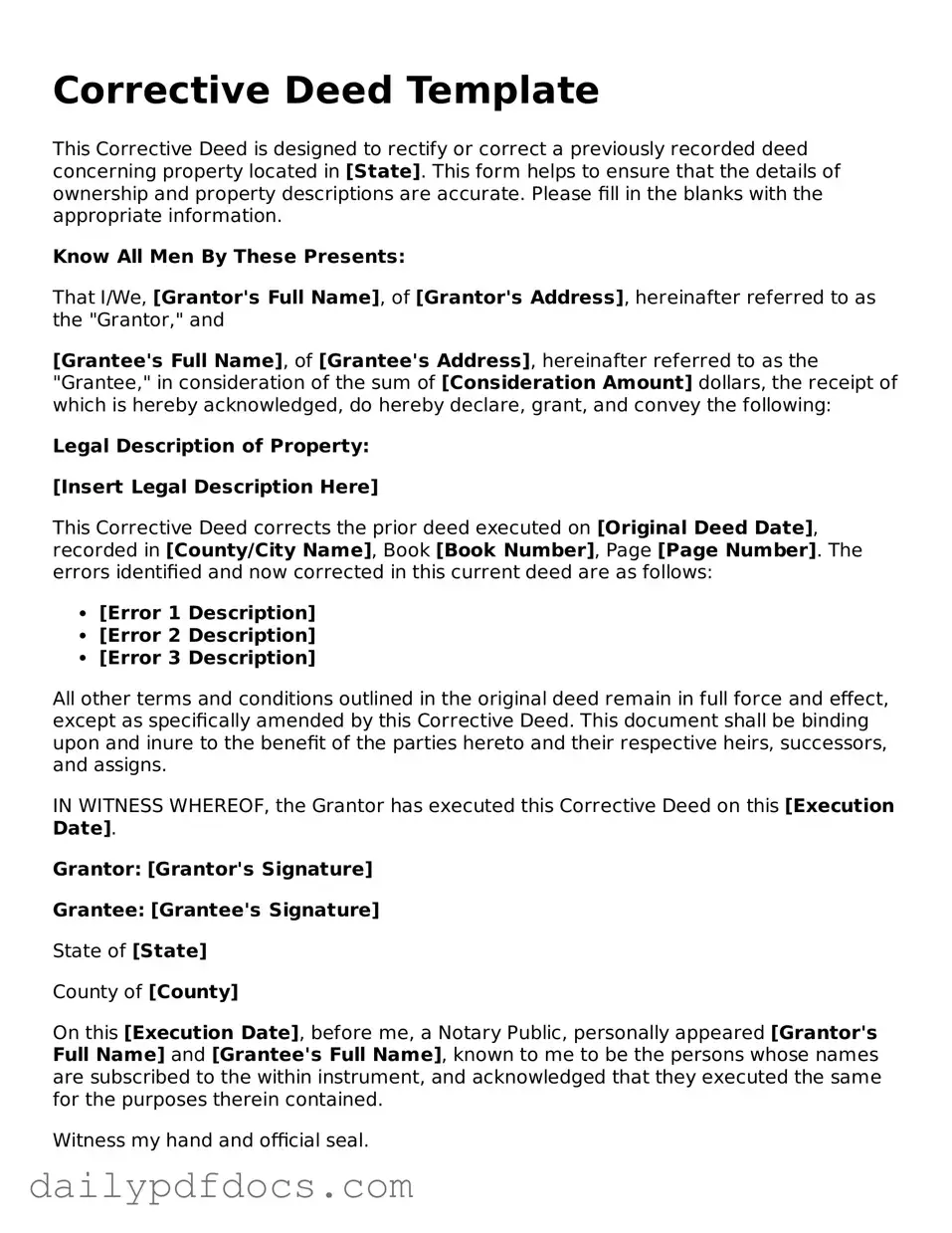What is a Corrective Deed?
A Corrective Deed is a legal document used to amend or correct errors in a previously executed deed. These errors may include misspellings, incorrect legal descriptions, or other inaccuracies that could affect the property’s title or ownership. The purpose of this document is to ensure that the public record accurately reflects the true intentions of the parties involved in the property transaction.
When should I use a Corrective Deed?
You should consider using a Corrective Deed when you discover an error in a deed that has already been recorded. Common scenarios include typographical errors, changes in property boundaries, or mistakes in the names of the parties involved. It is essential to address these inaccuracies promptly to avoid potential disputes or complications in the future.
How do I prepare a Corrective Deed?
Preparing a Corrective Deed typically involves drafting the document to clearly state the corrections being made. You will need to include the original deed’s details, such as the date it was executed and the names of the parties involved. Additionally, you must specify the errors and provide the correct information. It is often advisable to consult with a legal professional to ensure that the document is properly formatted and complies with state laws.
Do I need to have the Corrective Deed notarized?
Yes, in most cases, a Corrective Deed must be notarized. Notarization serves to verify the identities of the signers and confirms that they are signing the document willingly. This step adds a layer of authenticity and helps ensure that the deed is accepted by the relevant authorities when recorded.
Where do I file a Corrective Deed?
A Corrective Deed should be filed with the same office where the original deed was recorded, typically the county recorder or clerk’s office. By filing it in the same location, you ensure that the public record is updated to reflect the corrections made. It is important to check with your local office for any specific filing requirements or fees that may apply.
Is there a fee associated with filing a Corrective Deed?
Yes, there is usually a fee for filing a Corrective Deed. The amount can vary depending on the county or state where you are filing. It is advisable to contact the local recorder’s office to inquire about the exact fees and any additional costs that may be involved in the filing process.
Will a Corrective Deed affect my property taxes?
Generally, a Corrective Deed itself does not directly affect your property taxes. However, if the corrections made significantly alter the property’s boundaries or ownership, it could potentially impact your property tax assessment. It is wise to consult with your local tax assessor’s office to understand any implications that may arise from the changes made in the Corrective Deed.
Can a Corrective Deed be contested?
Yes, a Corrective Deed can be contested, particularly if there are disputes regarding the corrections made or if one party believes that the changes were not agreed upon. To minimize the risk of contestation, it is crucial to ensure that all parties involved are in agreement with the corrections and that the document is executed properly.
How long does it take for a Corrective Deed to be processed?
The processing time for a Corrective Deed can vary depending on the county’s workload and specific procedures. Typically, it may take anywhere from a few days to several weeks for the deed to be recorded and processed. It is advisable to follow up with the recorder’s office after submission to confirm the status of your filing.
What happens if I don’t file a Corrective Deed?
If you choose not to file a Corrective Deed after discovering an error, the inaccuracies will remain on the public record. This could lead to potential complications in the future, such as challenges to your ownership, difficulties in selling the property, or issues arising during refinancing. Addressing errors promptly helps protect your interests and maintains the integrity of the property’s title.
